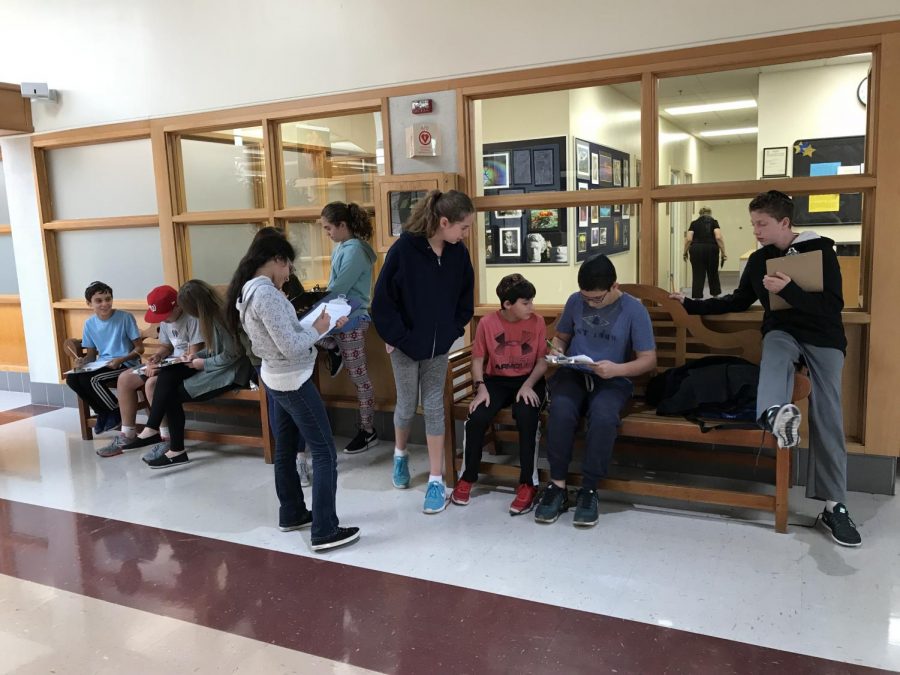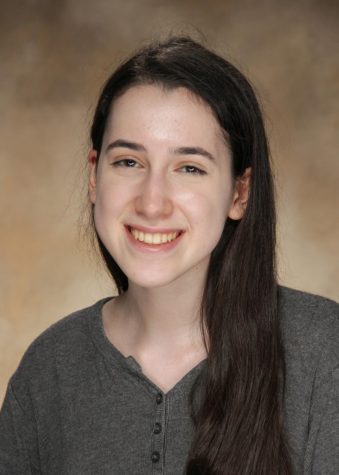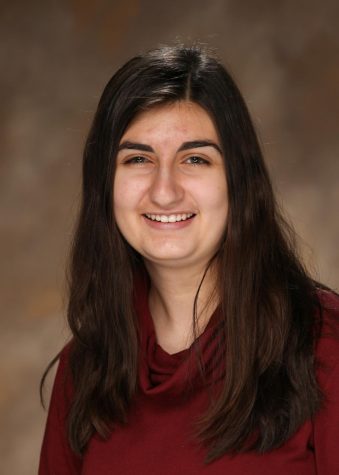Middle school administration launches kindness initiative
October 24, 2017
October is National Bullying Prevention Month, and the middle school administration decided to have a Middle School Community Building Day, called V’Ahavta Le’Rei’akha KamoKha, on Friday Oct. 20, in order to promote inclusivity in the CESJDS community.
According to middle school history teacher and sixth-grade chair Deborah Feigenson, who is also the sixth-grade chair, the administration and teachers noticed some problems in the middle school this year when students were not being inclusive or welcoming. Some students were having difficulty transitioning to the Upper School or JDS in general, and there were some “behaviors where people weren’t being as kind as we expect JDS students to be,” Feigenson said.
These behaviors inspired the creation of a year-long campaign organized by the middle school administration to build an inclusive environment in the middle school. Friday’s program was the first of the campaign. The programs were based on how students described their feelings about the community in a survey they completed on Oct. 17.
“We wanted to design something that would be meaningful for the students and we wanted to hear their voices,” Feigenson said. “Instead of planning it based on what we thought, we took the results of the survey and we designed the day based on that.”
Feigenson organized the program with middle school principal Eliana Lipsky, assistant principal Janet Ozur-Bass, English teacher and seventh-grade chair Naomi Gold and science teacher and eighth-grade chair Cassandra Ly. The day opened with a speech by senior Emily Nadler, where she reflected on her own experiences with bullying.
Nadler reached out to the administration about getting involved with kindness programming and was asked to speak to the middle school students about her experiences with bullying at her old school. She spoke about how the JDS community welcomed her and treated her with kindness when she began attending the school during her sophomore year.
“I think [having a day of kindness] definitely shows the students that JDS cares about having a kind environment and that they don’t tolerate any bullying and it’s ingrained in their minds how important it is to be kind to one another and to themselves,” Nadler said.
Nadler also focused on how small acts of kindness “go a long way” and encouraged the middle school students to focus on being kinder both when speaking to each other and on social media. Nadler concluded her speech with an announcement that if middle school students go to the guidance office and tell the counselors they did a kind act, then they will receive a bracelet, which she hopes will encourage them to do so.
“I hope that they got a lot out of it and really understood how much of an impact it is if someone is mean to [someone else],” Nadler said. “It’s easier to be kind than to be mean.”
The day continued on to four-workshop rotation. One focused on random acts of kindness, another on how to make the physical space of the school more welcoming, another on empathy, and the last on the concept of holiness in oneself and how one treats others.
The random acts of kindness and holiness workshops were mainly discussions in which students brainstormed how to best implement the concepts into the school community. The physical-space and empathy groups were more physical; students were given the chance to walk around the school to find changes that could be made to the school environment and respond to certain situations as a character.
Eighth-grader Talia Jacobson said that in her group, the students discussed how to be more mindful of the effect of their actions since someone can be a bully without realizing it. In the conversation, students identified how to be kinder and better accept people’s differences.
“I think it will make us more aware of how we should act and like, to be kind and just do the little things that help make it a better place,” Jacobson said.
Feigenson said that the coordinators of the program are looking to continue kindness programming throughout the year based on student input. They are discussing the idea of creating a leadership team of students to help plan future events.
“We have the desire to help students reach the mission and vision of our school, but you can’t tell people to be nice to each other; you can’t tell people to be welcoming,” Feigenson said. “It has to come from them, and they have to be working with each other.”









